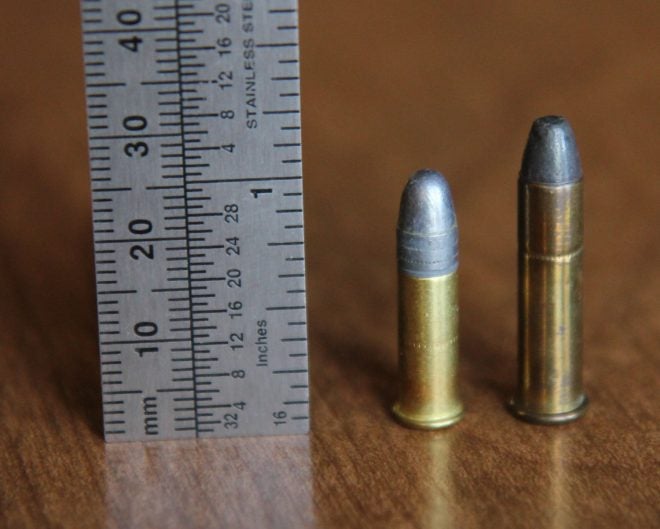Hello and welcome back to another edition of The Rimfire Report. In this ongoing series, we explore, discuss, and review the various aspects, history, and firearms of the rimfire world. This week we’re paying homage to an all but obsolete rimfire cartridge – the 22 WRF (22 Winchester Rimfire). First designed a mere 6 years after the iconic 22LR, the 22 WRF cartridge promised more power for hunters of small game. So why exactly did the 22 WRF fall out of favor?
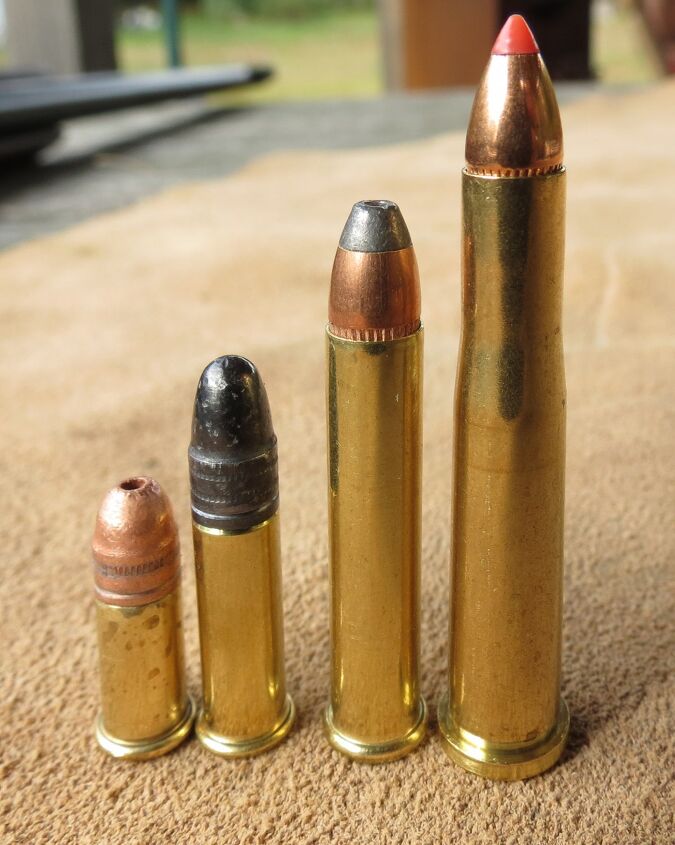
A Modern 22 WMR second from the right. Photo: Noahsachs
The Rimfire Report: An Ode to the Oft Forgotten 22 WRF
Right out of the gate I do have to say that 22 WRF is still sold in limited quantities today. Winchester still sells the ammunition through select distributors and even rifles specifically designed around the 22 WRF can still be found to this day albeit in modern dressing. On average you’re going to pay about 24 cents per round of 22 Winchester Rimfire. This is mostly due to the relative rarity of the cartridge as opposed to an increased cost in materials.
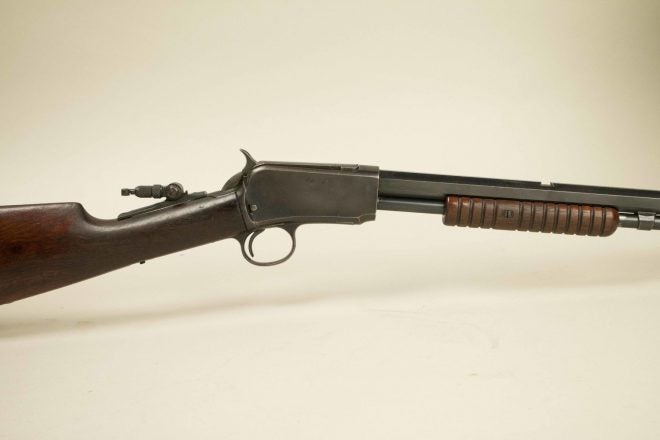
A Winchester Model 1890 Rifle (name of the rifle was later changed to Model 90 in 1929).
Remington had a cartridge that very closely mimicked the 22 WRF called the 22 Remington Special. Aside from the name and the use of a round nose bullet in the Remington offering, the two cartridges are identical in every other respect. Both cartridges can be used interchangeably without issue.
Design Characteristics
As opposed to the smaller 22LR cartridge which used round nose bullets, the 22 Winchester Rimfire used a flat-nosed projectile that weighed anywhere between 40 and 45 grains. Standard muzzle velocities for the cartridge were about 1,050 fps which matched the 22LR. Other offerings boasted a 45 grain projectile with a muzzle velocity of 1,450 fps as well as a lighter 40-grain hollow-point traveling at 1,440 fps.
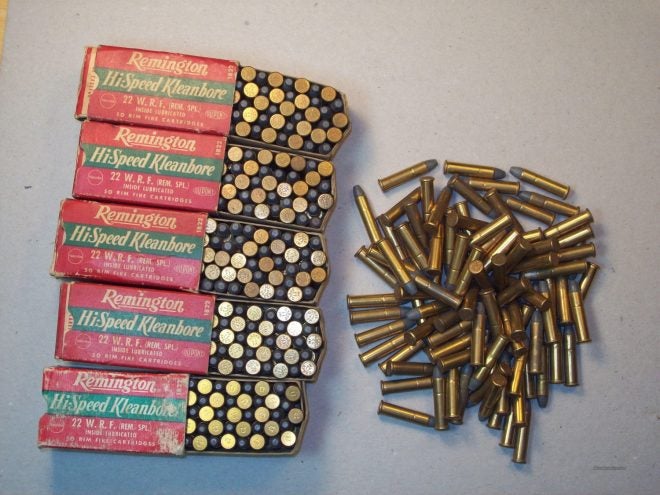
Vintage 22 WRF Photo: Guns America
The 22 WRF was not compatible with any 22LR chambered rifles as the case was just a touch longer than the 22LR at 1.180 inches COAL. Most of this extra length consisted of the case which was 0.965 inches. Rifles designed for the 22 WRF had a slightly faster twist rate of 1:14 as opposed to the slower 1:16 used as the standard for 22LR.
Interestingly, the 22 WRF made use of a more conventional projectile design with a non-heeled, interior lubrication flat-based projectile. This was in stark contrast to the heeled bullet of the 22LR which used more waxy “hard” lubricants due to the nature of the heeled bullet.
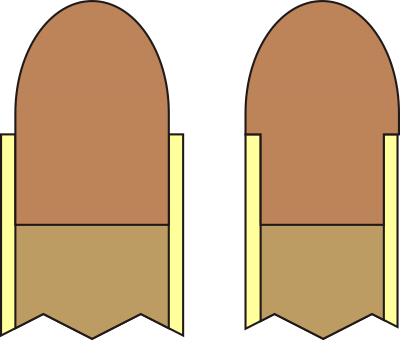
A modern bullet (left) vs a heeled bullet that is still used in the 22LR cartridge. Photo: Tullie
Modern offerings of the 22 WRF make use of the same standard projectiles with a “grease grove” for lubricating the barrel. This is needed mostly because of the lack of any sort of coating in combination with a soft low alloy lead bullets. Without proper lubrication, the lead eventually builds up in the bore causing performance issues. Modern offerings offer copper-plated bullets which significantly reduce bore residue.
22 Winchester Rimfire History
The 22 Winchester Rimfire ammunition was released alongside the Winchester M1890 slide fire rifle in 1890. When the cartridge was first introduced, propellants were still mostly black powder as smokeless powder had only just been patented by Hudson Maxim in 1890 – the same year the 22 WRF was released.
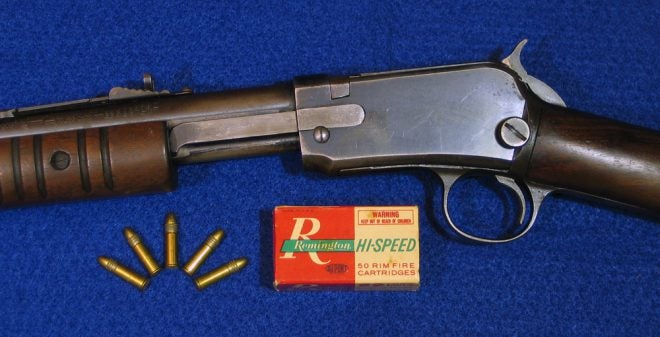
Because of the lack of advanced powders, the 22 Winchester Rimfire cartridge gave small game hunters a significant advantage within 100 yards when compared to 22LR. According to the 1972 edition of Barnes & Amber’s Cartridges of The World book, the 22 WRF “was the first notable improvement in the killing power” since the introduction of the 22LR. However, the same source also states that the Winchester Rimfire offering was also less accurate than its 22LR counterpart making the cartridge most useful within 75 yards. Some cartridges also featured the unique “snake shot” still found on 22LR cartridges today.
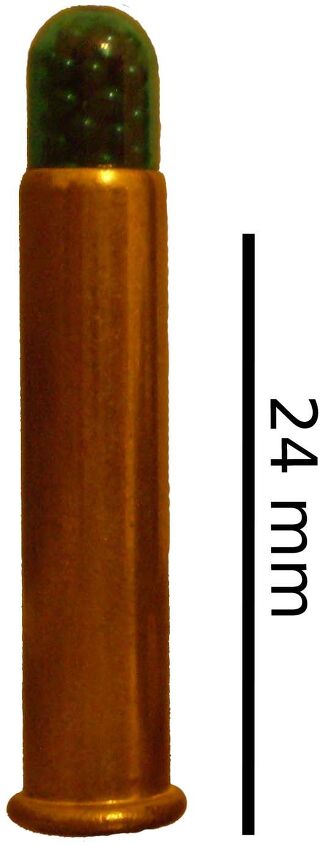
22 WRF Snake Shot. Photo: N.garbar
After the release of the M1890 rifle, several other companies brought rifles to the table for the new rimfire cartridge. Both Remington and Stevens firearms both produced single-shot and repeating rifles. Colt even produced a revolver chambered in the cartridge in 1928 called Police Positive. The revolver was also chambered in several other calibers.
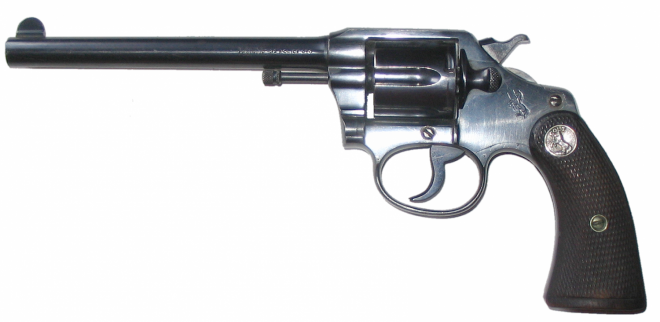
Colt Police Positive revolver. Photo: Colt
With the advent of more sophisticated smokeless powders developed just before WWII, the 22LR cartridge once again became a top contender for small rimfire rifles. The new powders offered a 300fps increase to the humble 22LR increasing the average velocity of the cartridge from 1,050 fps to 1,300 fps. The increased performance of the 22LR coupled with the significant cost savings effectively killed off the 22 Winchester Rimfire cartridge.
Old Cartridge, New Tricks
The apparent death of the 22 WRF was not without progress. As the 22LR took the lead and overshadowed the 22WRF a new cartridge was born. As the .38 Special led to the development of the venerated .357 Magnum, the 22 WRF was eventually developed into the 22 Winchester Magnum Rimfire – a cartridge I hope every small game hunter is intimately familiar with. Colloquially referred to as the “.22 Magnum” the 22 WMR was developed in 1959 and produced from 1960 onwards as some of the best performing 22 caliber rimfire ammunition out there.
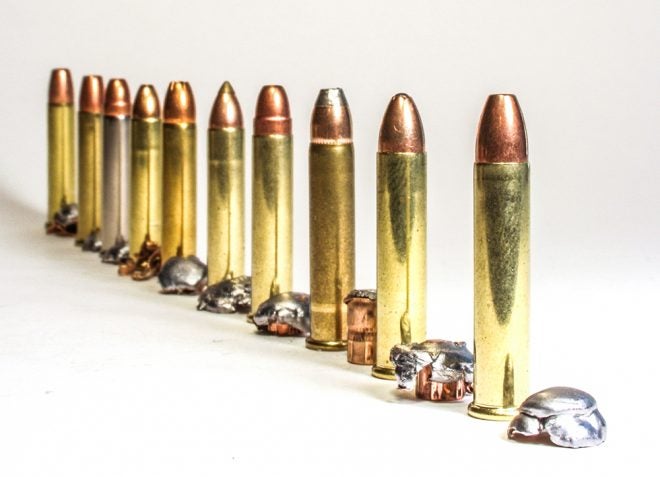
The 22 WMR followed the same design path as the 357 Magnums did from its parent design. As with the 38 Special, the 22 WRF case was lengthened, the bullet weight remained relatively the same, and the powder charge was increased. Combined with modern propellants, the 22 WMR is a force to be reckoned with even at longer ranges.
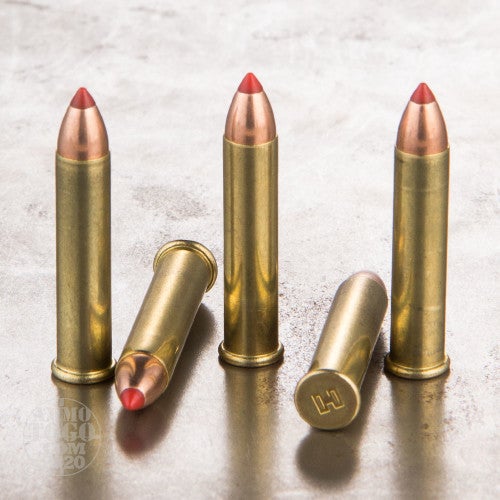
Photo: Ammo To Go
Thankfully, if you have a modern 22 WMR rifle and have inherited some 22 WRF, you can safely shoot your 100-year-old ammunition out of your modern 22 Magnum rifle with no issues as the 22 WRF only produces a SAMMI spec of 19,000 PSI while the 22 WMR produces an average of about 24,000 PSI. This is very similar to the similarities between 22 LR, 22 Long, and 22 Short.
More Rimfire To Come!
Thanks as always for stopping by to read The Rimfire Report. This ongoing series is a joy to write and I have learned a lot in the course of writing this continuous series. I do appreciate any insights, experience, and especially anecdotes from those of you who have a vast amount of rimfire firearms experience. If you have any suggestions about topics, firearms, or ammunition you’d like me to look into feel free to leave them with your comments below. See you next time!
We are committed to finding, researching, and recommending the best products. We earn commissions from purchases you make using the retail links in our product reviews. Learn more about how this works.
 Your Privacy Choices
Your Privacy Choices
